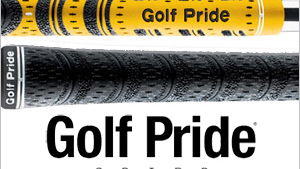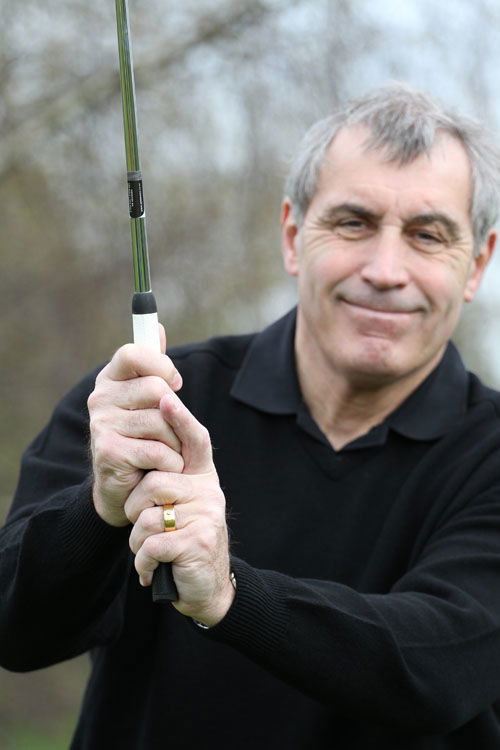Golf grips: Ten things you didn't know...
Getting to grips...with Golf Pride

WE TEND to take for granted the grips on our clubs, even though they are the only part of the golf club that we actually touch while making our swing. They play a major part - far more than most of us realise - in our performance.
It's from our grip of the club that we get the feel of a shot, the sensation of how the impact of the ball on the clubface, whether driver, hybrid, iron, wedge or putter, travels up the shaft to our finger tips.
In turn this is computed by our brain to give us feedback as to how well the shot was played in terms of distance and forgiveness.
At the recent BMW PGA Championship at Wentworth, Jim Ulrich (Global Tour manager), a key figure at Golf Pride, the world leader in golf grips, was on hand to answer questions about the company and what advice they could pass on to Golfmagic readers on how to look after and make the best use of the grips on their clubs.
How did the brand get its name?
An oil company has to take most of the credit. In 1949 when the company was formed, one of our founders filled up his tank with ‘gas’ and noticed an oil brand name, Gulf Pride on the way to paying at the kiosk. When he got back he changed one letter and ran it past his colleagues. They liked it and the next day it was agreed to call the company Golf Pride.
What's its history?
The company was founded by Thomas Fawick, an inventor, industrialist and keen but not very good golfer, who spotted an opportunity to sign a manufacturing agreement with an Ohio-based rubber company that helped things grow steadily until 1953. Their big break came with the introduction of the first ‘slip-on’ grip.
These new rubber grips helped improve feel and durability compared to the leather strips that had been wrapped around the butt of the clubs since the early hickory shafts. It made the modern steel-shafted clubs lighter and helped absorb the shock from ball on clubface more effectively.
The impact of the slip-on grip on the Golf Pride company was significant and lasting and helped to shape the future of golf club manufacturing. It also made grip replacement a stable service to offer in golf shops and a quick and inexpensive way for golfers to update their equipment.
Where is the company based?
The company is now owned by the Eaton Corporation and based in Cleveland Ohio, with UK distribution in St Ives, Cambs and offices throughout Europe.
How popular are Golf Pride grips on Tour?
The latest Darrell Surveys which are the benchmark for identifying the most-used golf equipment - at least on the US PGA Tour - revealed that 79 of the 96 players in the 2010 US Masters field had Golf Pride grips on the majority of clubs in the bag and 47 of those approximately half the field used the Golf Pride Tour Velvet grip model. It was a similar story at the recent Players Championship at Sawgrass, where 120 of the 145 players had Golf Pride grips on most clubs in the bag.
Is there a right and a wrong grip for a player?
There is no one grip that is right for all golfers. Grip selection varies widely with individual needs and preferences. A good starting point in selecting grips is to explore the Golf Pride Grip Selector. Once you've narrowed your choices, seek the advice of a professional club-builder or custom-fitter.
What's the best grip if my hands sweat or I regularly play when it's wet?
Cord grips have always been referred to as "all weather" grips because it's the cord material that wicks moisture away from the grip surface and provides the best possible grip in the wet or if your hands perspire . But no grip is waterproof and a dry towel should always be handy to keep grips at their best.
Do I really need to have my clubs re-gripped regularly?
We usuallly recommend that golfers should regrip their clubs once every year or, say, every 40 rounds. But no matter how often you play dirt, oils heat are constantly breaking down the rubberized materials that make up the grips and making them smooth and less easy to handle effectively. If you play a lot you should have them re-gripped more frequently but with normal use there's enough degradation of the material after a year to warrant fresh grips. Grips tend to lose a significant amount of their original feel long before they become hard and slippy. Even a tiny, imperceptible slip at contact will be magnified to many yards by the time the ball reaches its target.
A recent national survey of golfers in the US showed that 66% of those who had clubs re-gripped showed an average drop of three to four strokes per round!
What about just cleaning grips?
It's always sensible to do this with soapy water after every round to keep them tacky and supple and less liable to slip in contact with the ball. Remember to rinse them in clean warm water. The traction that a fresh grip provides, even a freshly cleaned one lets you hold the club lightly without the subconscious fear of losing the club during your swing. In this relaxed state of mind, it promotes proper swing mechanics and wrist action. A worn grip can cause a golfer to grasp the club more tightly. In turn this causes arm and wrist tension that can inhibit your swing and lead to a loss of power and control.
How much will it cost to regrip my clubs?
Expect to pay anywhere from £45 to £70 for your entire set of clubs, depending on the grips you choose.
How do I know the proper size grip for me?
While standard size grips are adequate for the vast majority of golfers, many players can benefit from oversize or undersize grips. Normally a proper size grip permits the fingers in your left (top) hand for a right-handed golfer to barely touch the palm. But the only sure way is to seek the advice of a PGA pro who can recommend based on hand size, swing technique, and shot pattern.
For example, if you take a an X-Large glove size and above, you need midsize to jumbo grips, large glove - standard to midsize - and men's medium to medium large - standard grips.
��

